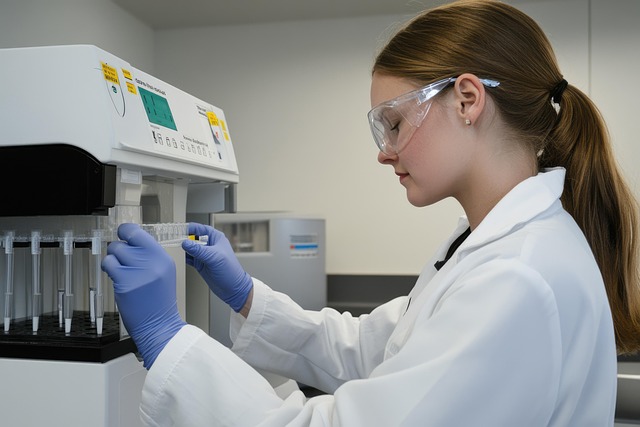San Antonio homes built before 1980 may contain asbestos, posing health risks. Certified asbestos testing services identify hidden asbestos in older homes, offering peace of mind and guidance for safe renovation or sale, while adhering to local regulations. Professionals follow a meticulous process including visual inspections, sampling, lab analysis, and comprehensive reporting.
“In many older homes, asbestos—a once-prevalent building material known for its durability but now recognized as a significant health hazard—remains hidden within walls, floors, and insulation. For San Antonio residents, understanding the risks and knowing when to seek professional assistance is crucial. This guide delves into the importance of asbestos testing for older homes, offering insights on common sources, potential risks, and a step-by-step breakdown of what to expect during a certified inspection.”
- Understanding Asbestos: Risks and Common Sources in Older Homes
- The Importance of Professional Asbestos Testing in San Antonio
- Step-by-Step Guide: What to Expect During an Inspection
Understanding Asbestos: Risks and Common Sources in Older Homes

Asbestos is a hazardous material that was commonly used in construction materials up until the 1980s due to its insulation and fire-resistant properties. In older homes, particularly those built before 1980, asbestos can be found in various forms such as insulation, flooring, roofing shingles, and even in some types of cement. While it may appear hidden behind walls or under flooring, the risks associated with asbestos exposure are severe. Prolonged contact or inhaling asbestos fibers can lead to serious health issues, including mesothelioma, lung cancer, and asbestosis.
In San Antonio, where many homes have an average age of over 40 years, asbestos testing is crucial for ensuring the safety of residents and prospective buyers. Asbestos testing services identify and quantify the presence of this hazardous material in older homes, providing valuable data to make informed decisions regarding renovation, repair, or selling. For homeowners concerned about potential asbestos risks, certified inspection services offer peace of mind by delivering accurate and reliable results tailored to San Antonio’s unique housing market.
The Importance of Professional Asbestos Testing in San Antonio

In San Antonio, where many homes have aged over several decades, professional asbestos testing is more crucial than ever. Asbestos, once widely used for insulation and construction purposes, can remain hidden within walls, floors, and attics, posing significant health risks to homeowners and occupants. Asbestos testing for older homes in San Antonio is essential to identify any potential hazards and ensure the safety of your family and property value.
Hiring certified inspection services specializing in asbestos testing offers a comprehensive solution. These experts are trained to handle potentially dangerous materials with utmost care, utilizing advanced techniques and equipment to detect even trace amounts of asbestos. Their findings not only provide peace of mind but also guide appropriate remediation or mitigation strategies, adhering to local regulations and minimizing disruption during renovation or remodeling projects.
Step-by-Step Guide: What to Expect During an Inspection

During an asbestos testing inspection for older homes in San Antonio, a certified professional will follow a meticulous process to ensure accurate results. Here’s what you can expect step-by-step:
1. Preparation: The inspector arrives at your property and begins by reviewing any relevant history or previous tests. They’ll then set up their equipment and don personal protective equipment (PPE) to safely handle potential asbestos materials.
2. Visual Inspection: The inspector conducts a thorough visual examination of the suspected areas, looking for signs of asbestos-containing materials (ACM). This includes checking walls, insulation, flooring, ceilings, and other common sources. They take note of any visible damage or deterioration.
3. Sampling: Depending on the initial findings, the inspector will collect samples from suspect materials. Using tools like knives or scrapers, they carefully cut out small pieces for laboratory analysis. Each sample is labeled with relevant information to ensure accurate testing and tracking.
4. Laboratory Analysis: The collected samples are sent to a certified laboratory for detailed analysis using advanced techniques like X-ray fluorescence (XRF) or transmission electron microscopy (TEM). This process identifies the type, concentration, and risk level of asbestos present.
5. Reporting: Once the lab results are available, the inspector prepares a comprehensive report detailing their findings. This document includes recommendations for safe removal or abatement if asbestos is detected at levels that exceed safety thresholds.
In light of the above discussions, it’s clear that professional asbestos testing services in San Antonio are indispensable for ensuring the safety and health of homeowners, especially those living in older properties. By understanding the risks associated with asbestos and following a thorough inspection process, residents can mitigate potential hazards effectively. When considering asbestos testing for older homes in San Antonio, certified inspectors equipped with the right tools and knowledge are key to providing accurate assessments, allowing for informed decision-making and peace of mind.
